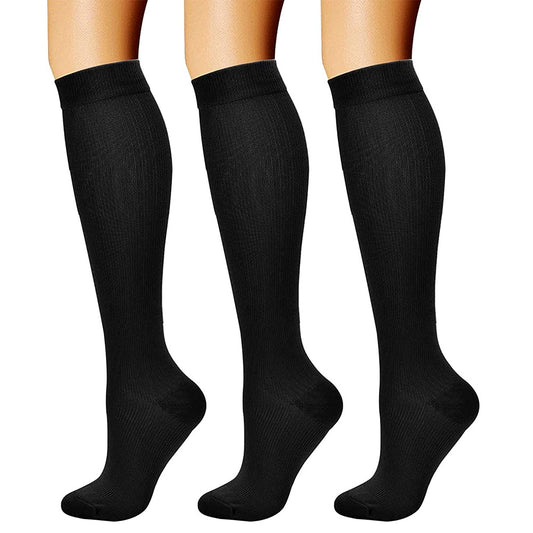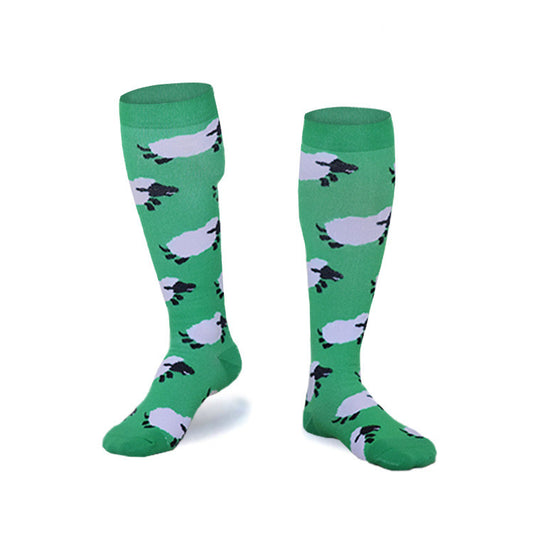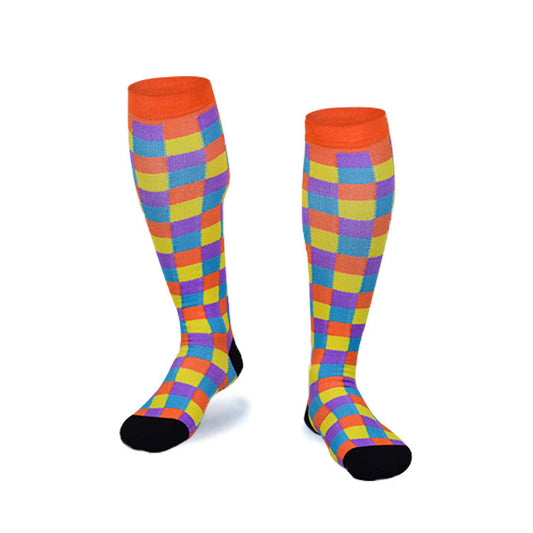-
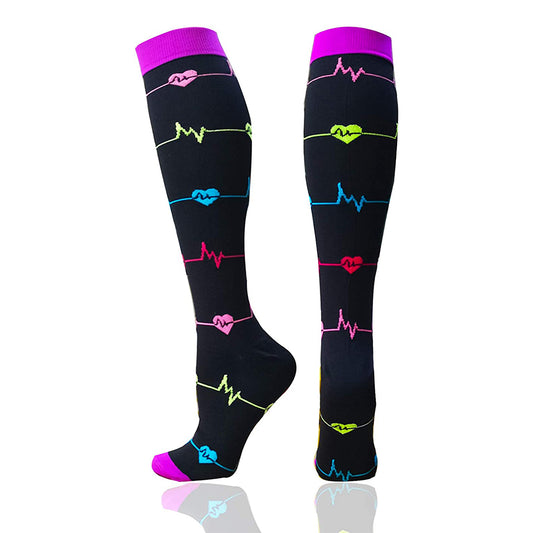
Compression Socks Women & Men - Best for Running,Medical,Athletic Sports,Flight Travel, Pregnancy
Regular price $15.99 USDRegular price$26.99 USDSale price $15.99 USDSale -
Compression Socks for Women & Men Circulation (3 Pairs)15-20 mmHg is Best Support for Athletic Running Cycling
Regular price $23.99 USDRegular price$30.00 USDSale price $23.99 USDSold out -
Compression Socks for Women & Men Best Medical, Nursing, for Running, Athletic, Varicose Veins, Travel
Regular price $17.99 USDRegular price$35.00 USDSale price $17.99 USDSale -
1 Pairs Compression Socks 20-30mmHg for Men and Women Running Support Socks
Regular price $17.99 USDRegular price$35.00 USDSale price $17.99 USDSale -
ZSZBACE Compression Socks for Men Women Nurses Runners 20-30mmHg Medical Stocking Athletic
Regular price $17.99 USDRegular price$35.00 USDSale price $17.99 USDSale -
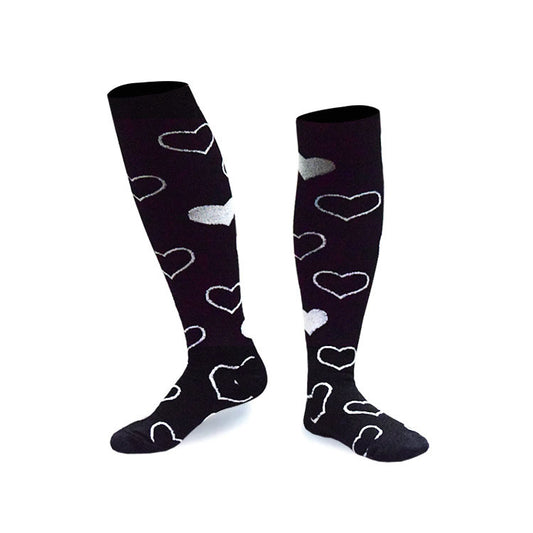
Compression Socks For Women and Men Circulation(1 Pairs)-Best support for Running,Sports,Pregnancy
Regular price $17.99 USDRegular price$35.00 USDSale price $17.99 USDSale -
Compression Socks for Women & Men Circulation 20-30mmHg - Best Support for Running Athletics Nursing Travel
Regular price $17.99 USDRegular price$35.00 USDSale price $17.99 USDSale -
1 Pairs Compression Socks for Women Men Knee High Running Stocking 20-30 mmHg Nurse Medical and Travel Athletic
Regular price $17.99 USDRegular price$35.00 USDSale price $17.99 USDSale -
Compression Socks for Women & Men(1 Pairs) - Best Support for Medical,Circulation, Nurses, Running, Travel
Regular price $17.99 USDRegular price$35.00 USDSale price $17.99 USDSale -
Compression Socks for Women & Men Circulation, Knee High Stockings Support for Nursing, Athletic, Hiking, Running
Regular price $17.99 USDRegular price$35.00 USDSale price $17.99 USDSale -
Women's Fancy Design Multi Colorful Patterned Knee High Socks
Regular price $17.99 USDRegular price$35.00 USDSale price $17.99 USDSale -
1 Pairs Compression Socks for Women & Men Circulation 20-30 mmHg Support for Medical, Running, Cycling, Hiking, Flight Travel (S/M, L/XL)
Regular price $17.99 USDRegular price$35.00 USDSale price $17.99 USDSale -
Compression Socks for Women Circulation Compression Socks Calf Knee High Support
Regular price $17.99 USDRegular price$35.00 USDSale price $17.99 USDSale -
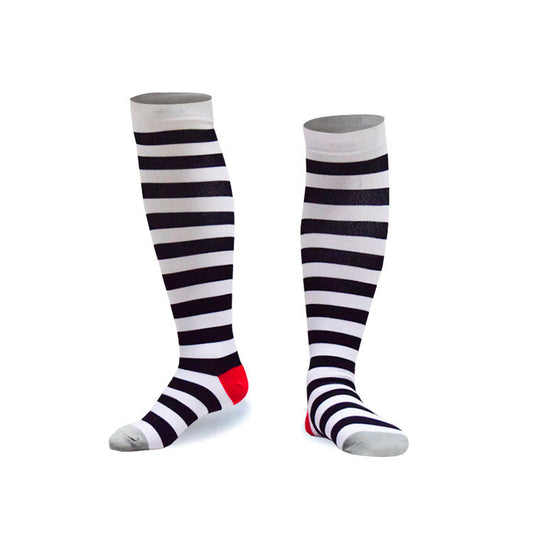
Zszbace Compression Socks for Women & Men Circulation Long Socks for Running Cycling Athletic Nurse
Regular price $17.99 USDRegular price$35.00 USDSale price $17.99 USDSale -
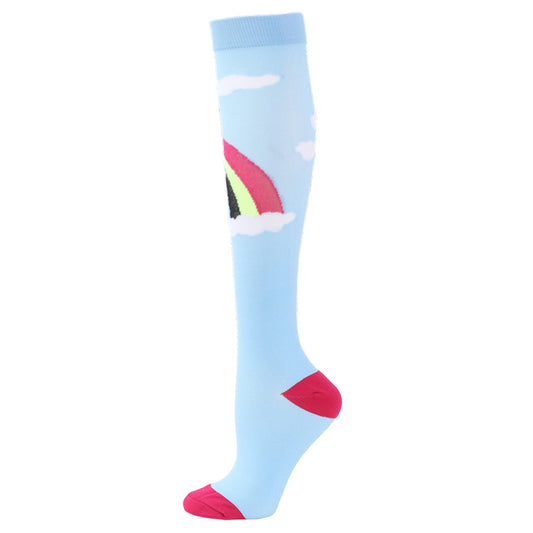
Compression Socks for Women Men Knee High Running Stocking 20-30 mmHg Nurse Medical and Athletic
Regular price $17.99 USDRegular price$35.00 USDSale price $17.99 USDSale -
Fun Compression Socks for Women & Men Circulation, Long Stockings Support for Cycling, Hiking, Sport, Travel, Fishing, Flight
Regular price $17.99 USDRegular price$35.00 USDSale price $17.99 USDSale
Collection: compression socks for large calves
Why Choose Compression Socks for Large Calves?
Designed for Optimal Fit
Our wide calf compression socks feature expanded calf dimensions (14-22" circumference) with stretchable fabrics that adapt to fuller legs without constriction. Unlike standard socks, these eliminate uncomfortable tightness behind the knees.
Medical & Performance Benefits
- 20-30 mmHg graduated compression boosts blood flow
- Reduces leg fatigue during 12-hour nursing shifts
- Prevents DVT during long flights
- Accelerates muscle recovery post-workout
Top Picks for Wide Calf Support
1. 15-20 mmHg Graduated Compression Socks
Ideal for daily wear with moderate compression. Moisture-wicking fabric keeps legs dry during workouts or work shifts.
2. 20-30 mmHg Wide Calf Medical Socks
Clinically-proven pressure for managing varicose veins and severe swelling. Reinforced heels prevent blistering.
3. Athletic Compression Socks (S/M & L/XL)
Targeted arch support and breathable mesh panels for runners/cyclists. Reduces muscle vibration by 38%*.
4. All-Day Comfort Knee High Socks
Seamless toe design prevents irritation. Graduated compression maintains energy during prolonged standing.
How to Measure Your Calf Size
- Sit with legs at 90° angle
- Measure fullest part of calf (Circumference A)
- Measure ankle circumference (Circumference B)
- Compare with our size chart
Pro Tip: Size up if between measurements or for extra-wide calves.
FAQs: Compression Socks for Large Calves
Q: Will these leave marks on my legs?
A: Our wide-calf designs use gradient compression technology that evenly distributes pressure without leaving indentations.
Q: Can I wear them while sleeping?
A: We recommend consulting your physician. Most users wear them during active hours (max 12 hours/day).
Q: How do I prevent rolling at the top?
A: Our non-slip silicone bands keep socks securely in place, even on muscular calves.
Q: Are they machine washable?
A: Yes! Wash cold inside-out and air dry to maintain elasticity.
*Clinical study by Journal of Sports Science & Medicine (2022)


